England in the 15th century
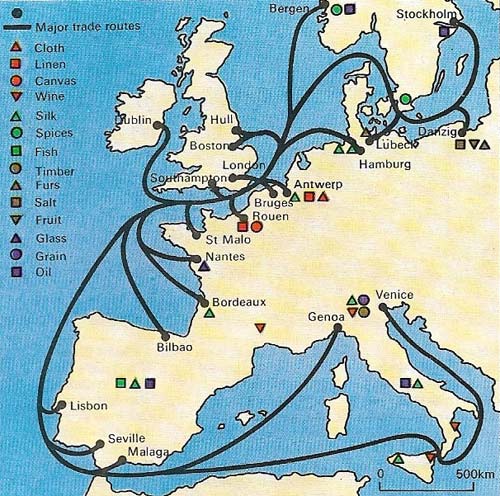
Figure 1. Trade in northwest Europe increased markedly during the 15th century and England participated fully in the boom. The nation imported firs and corn from the Baltic, wine from Southern Europe and spices from the East. Cloth was the main English export. The Hanseatic League of north German towns won trade concessions in several English ports in the 1370s and it dominated London's trade with the Baltic, where the League had a virtual monopoly. The Genoese dominated the trade with the south that was centered on Southampton. But English merchant adventurers gradually increased their share of the trade during the 15th century.
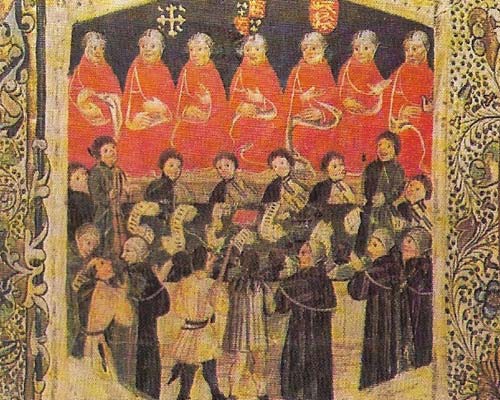
Figure 2. At the Court of Common Pleas, the plaintiff spoke in a kneeling position. Although courts were subject to intimidation, the increasing influence of the legal profession and the independence of judges such as Chief Justice Fortescue suggests that on many occasions they refused to be corrupted.
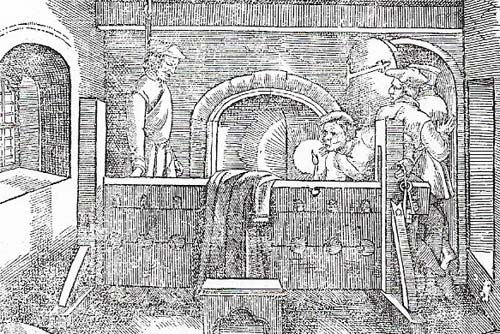
Figure 3. The Lollards regarded the Bible as the sole authority of religious truth and inveighed against the wealth and worldliness of the Church. They were the disciples of John Wycliffe (c. 1328–1384) who had denounced clerical authority and the worship of images. After a "rising" in 1424 the Lollards were subjected again to persecution and public burning. This picture shows the prison chamber in which Richard Hunne, a rich merchant accused of holding unofficial religious services, was found dead in 1514.
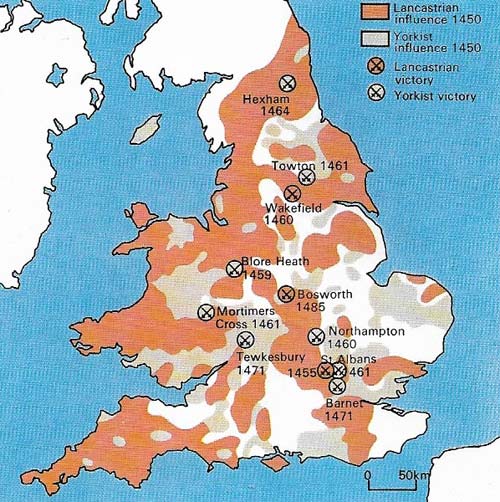
Figure 4. The War of the Roses were fought between descendants of Edward III. There was little consistent support from any particular area for either Lancastrian or Yorkist claimant to the throne, although from 1461 the Lancastrians relied on the support of the "reivers" of the Scottish borders.
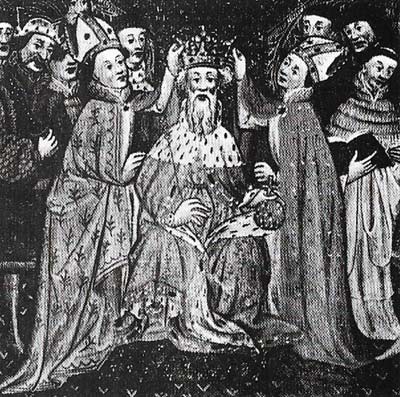
Figure 5. The confused Henry VI was taken from the Tower and restored to the throne in a ceremony at St Paul's in 1470. His wife, Margaret of Anjou, was tenacious in keeping the Lancastrian cause alive in spite of his madness. Henry had become king in 1422, aged nine months. He was finally murdered on 1471 after the return of Edward IV.
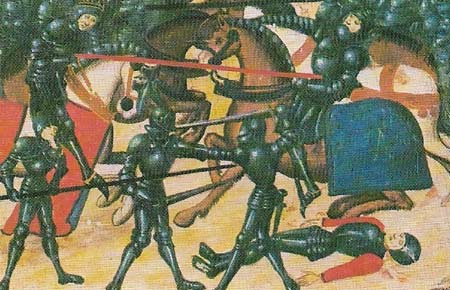
Figure 6. At the Battle of Barnet (April 1471), Edward IV defeated his former ally Warwick and cleared the way for his own victory the following month over the forces of Margaret of Anjou and her son, the Lancastrian heir, who was killed fighting. Although many of the leaders of the defeated side might lose their heads after such a battle, it was not impossible for their supporters from the gentry to survive by offering their services to their victors. The wars hardly affected the lives of the poor.
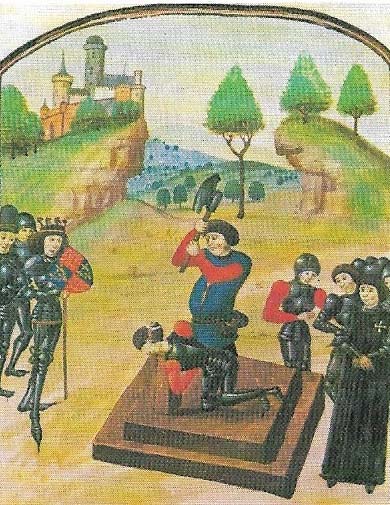
Figure 7. The execution of Edward Beaufort. Duke of Somerset, followed his capture in the Battle of Tewkesbury (1471), the final Yorkist victory that restored Edward IV. Many Lancastrians were executed for treason after the summary trial by military law.
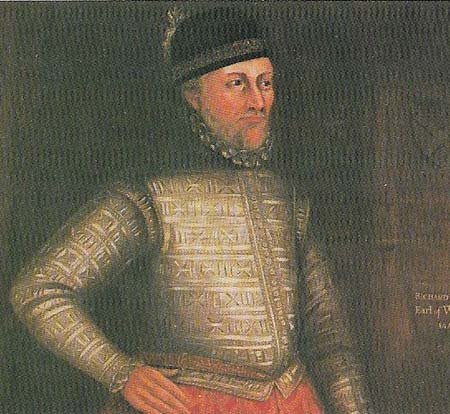
Figure 8. Richard Neville, Earl of Warwick (1428–1471), called "the King-maker", supported the York claim to the throne. Upon the Yorkists' victory in battle he received vast tracts of land and important posts of state. At first a dominant influence on Edward IV, he then went out of favour, engineered the brief restoration of Henry VI and was killed fighting at Barnet.
The period from the deposition in 1399 of Richard II (in favor of his cousin, Henry of Lancaster) to the death of Richard III on the field of Bosworth in 1485 is among the most turbulent in English political history. The murders of Richard II, Henry VI, and Edward V, and the violent death of Richard III, illustrate the inability of the Crown to establish the line of succession clearly enough and rule firmly enough to rise above faction.
An insecure throne
The claim of Henry IV (reigned 1399–1413) was powerfully supported by conquest and parliamentary title. Henry V's overwhelming popularity put the question of succession into abeyance while he lived and during his son's minority, but the feebleness of the adult Henry VI (reigned 1422–1460; 1470–1471) raised it anew. Richard, Duke of York (1411–1460), popular as the enemy of the court favorites, had a strong hereditary claim to the throne. After his death his son succeeded in driving out Henry and reigning as Edward IV (reigned 1461–1483) – although not securely until he had extinguished the Lancastrian dynasty after its short-lived restoration (Figures 5 and 6) at the hands of the Earl of Warwick, "the Kingmaker" (Figure 8), in 1470–1471.
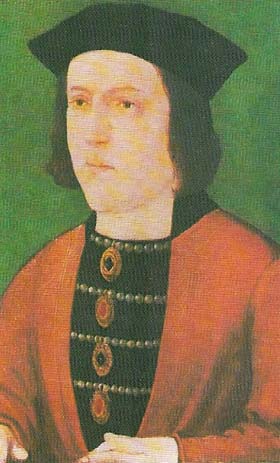 |
| Edward IV had political as well as military talents, and despite his light-hearted manner he was an intelligent, determined king. His centralizing policies, particularly in the financial sphere, laid the ground for those of the Tudors. |
Factional dispute arose again during the minority of Edward's son, Edward V (1470–1483), in 1483 and he was quickly imprisoned and almost certainly murdered as one of the "princes in the Tower" by his uncle Richard, Duke of Gloucester (1452–1485), who reigned as Richard III (1483–1485). The invasion of Henry VI's half-nephew, Henry Tudor (1457–1509), rallied the numerous enemies of the king but it was many years before Henry VII, his weak hereditary claim bolstered by marriage to the sister of Edward V, would sit securely on the throne.
Areas of consolidation
This political turbulence, although it bred insecurity, did not prevent solid progress and development of English wealth (Figure 1) and institutions. Parliament, by 1400 the essential organ of royal cooperation with the landed classes of the shires began by 1500 to command increasing respect. The courts of justice (Figure 2) were sustained by a vocal and powerful body of common lawyers. The traditional bodies that governed the counties and boroughs generally increased their autonomy: the counties in the hands of local gentry as justices of the peace (JPs) and the boroughs under their new charters of incorporation as independent legal entities. For the Church it was a time of peaceful enjoyment of traditional revenues.
The letters of the Paston family of Norfolk reveal the intricate web of local and national institutions, secular and ecclesiastical, and the need for patrons, connections and friends at court to use them effectively. Threatened by powerful neighbors in his inheritance from John Fastolf (c. 1378–1459), John Paston (1421–1466) spent several months in London in 1465 seeking remedy from the law and help from patrons. The Wars of the Roses (Figure 4) did not seriously disturb the fortunes of such people.
The limits of ambition
Historians once attributed many of the political disturbances of the century to the over-whelming power of the nobility and their hired henchmen, recruited to serve them for pay or political favor, without the moral or social obligations of earlier feudalism. "Bastard feudalism" – the short-term recruitment of military retinues and local agents from among the gentry by formidable political figures – was certainly practised, but these "empires" of patronage were never very solid. The great nobility might indulge in affrays like the Battle of Nibley Green (1469) between the Berkeley and Talbot families, but so did respectable gentlemen such as the Pastons. Moreover, "bastard feudalism" restrained potential trouble-makers by associating them with great political factions.
For most of the century the nobility cooperated remarkably well to govern the country. Powerful captains such as Richard Beauchamp, Earl of Warwick (1382–1438), hoped the Lancastrian kings would lead them in victorious and profitable Continental war, and until the English were finally expelled in 1453 men such as Warwick had more to gain by exploiting the French than by civil war. During Henry VI's long minority (1422–1442) cooperative rule by the king's Council proved a successful and generally popular experiment, despite the rivalry of Henry Beaufort and Humphrey, Duke of Gloucester (1391–1447). The financial weakness of the Crown became an increasing problem however, and this, combined with the unpopularity of the queen and Henry's lapse into madness allowed the dormant claims of York to acquire genuine support during the 1450s.
The social progress and cultural achievements of the century were considerable. The rise of the independent yeoman farmer, the cloth-maker, the wool exporter and the small-town merchant encouraged a multitude of local enterprises, to the general profit. Such men were usually literate, increasingly so as printed books became more readily available. English architecture, both ecclesiastical as in the magnificent King's College Chapel, Cambridge, or domestic as in Tattershall Castle, reached the zenith of its brilliantly distinctive Perpendicular phase. Whatever the troubles of the monarchy these achievements remained.
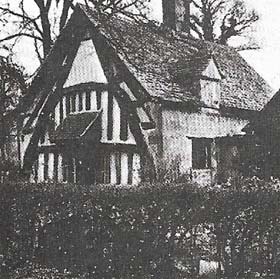 |
| A yeoman's cottage at Didbrook, Gloucestershire, is typical of the stone or half-timbered houses put up in the 15th century which reflected the growing prosperity of the independent rural landowner. From the mid-14th century, landlords increasingly rented or leased out the demesne since the fall in rural population made it hard to farm in the old way; the consequent new class of small farmers, freed from feudal obligations, strengthened their hold on the land and provided a new basis for rural prosperity. |
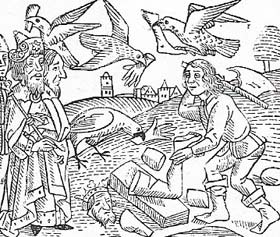 |
| William Caxton (c. 1422-1491) printed The Game and Playe of Chesse in Bruges shortly before he moved to London in 1476. Caxton was the first English printer and his books reached a far wider audience than could afford to buy manuscripts. |
